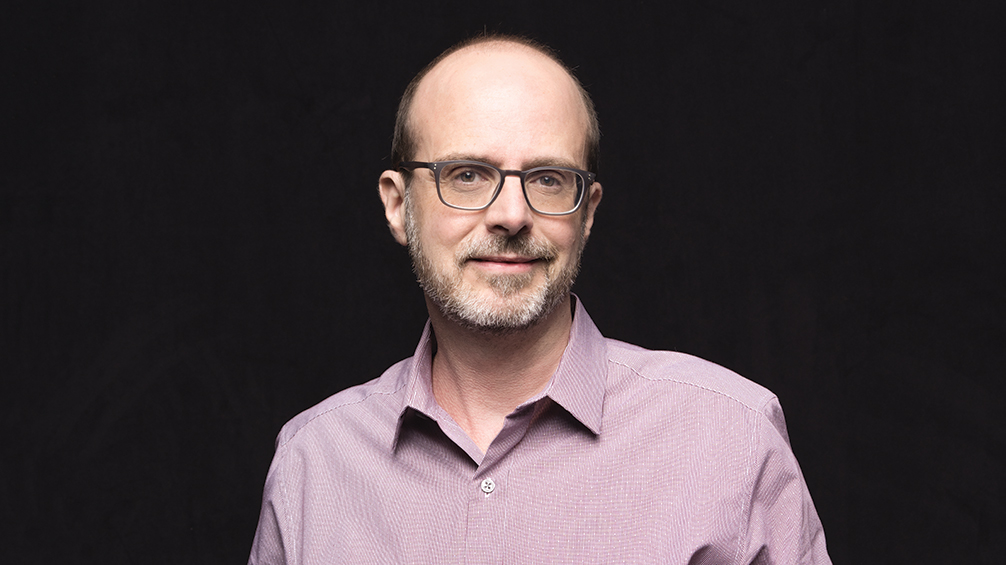Meet the Man Who Educates the Media on Addressing the LGBT Population
By Ricardo Lopez
LOS ANGELES (Variety.com) – Over the 20 years Nick Adams has worked for , the organization’s longtime director of transgender media and representation has helped educate not only the news media but also the millions of people who have turned on their televisions, read a newspaper — or even played the “Sims” video game.
Unassuming and humble, Adams, 54, has quietly toiled behind the scenes during some of the most important moments in transgender visibility and acceptance in media over two decades.
Adams helped introduce Chaz Bono, previously known to the world as an out lesbian activist before undergoing a very public transition in 2009. Bono became one of the earliest and highest-profile transgender individuals worldwide.
In 2010, Adams worked with “Degrassi” showrunner Linda Schuyler and helped develop the Canadian show’s first trans character — well before Netflix hit “Orange Is the New Black” made Laverne Cox, the transgender actor and activist, a star.
Three years ago, video-game maker Electronic Arts approached Adams, seeking to make “The Sims,” its life-simulating game played by millions, inclusive of trans people by allowing players to express gender identity through their avatars.
Still, Adams says, the recent progress hasn’t yet brought widespread acceptance of transgender individuals.
“The culture’s understanding of who transgender people are is so far behind the understanding of who gay, lesbian and bisexual people are — I think as much as 20 years behind in terms of media portrayals,” Adams notes. “I’d compare it to the moment right before ‘Ellen’ [the 1994 sitcom] and ‘Will & Grace’” in 1998.
He remembers the conservative backlash trained on Bono, some of it coming from media outlets like Fox News. To counter those criticisms, Adams created and circulated tip sheets to media on how to refer to Bono and the proper terminology to use. When Bono competed on “Dancing With the Stars,” GLAAD launched a #ProBono campaign to support one of the rare examples of transgender representation in primetime.
“Without GLAAD and without someone like Nick there guiding the media and helping trans people, who, for whatever reason, have to be dealing with the media, representations would not be as good,” Bono says. “People’s own personal experiences in how to come out and shape their story, how to do press, would not go nearly as well.”
When he started at GLAAD in 1998, Adams, who is a gay transgender man, spent the early part of his career at the organization simply establishing a common language for speaking about the transgender community. He wrote the section on transgender individuals for GLAAD’s media reference guide, a tool available to the news media that underpinned changes to The Associated Press Stylebook, which is widely used by news reporters and editors.
For instance, before 2000, The AP Stylebook advised reporters and editors to refer to trans people as transsexuals — an outdated term that originated in the medical and psychological communities. It also advised news media to rely on whether an individual had had a sex change to determine the appropriate gender to use. In 2006, the AP guide dropped the outdated terms; it now advises the use of the pronoun preferred by the individual.
When Caitlyn Jenner first publicly shared that she is transgender in a 2015 interview with ABC News’ Diane Sawyer, Adams worked closely with the news organization to ensure the segment and spinoff stories for its website would contain accurate information and resources on the trans community.
“We were so grateful to have Nick as one of our touchstones during the work on our Caitlyn Jenner special,” notes Sawyer. “He was perceptive, patient with a thousand questions, and always worked to create understanding and connection.”
These days, Adams primarily liaises with networks and film studios. He frequently reads scripts, giving writers feedback as they prepare to write a trans character.
“Degrassi” co-creator Schuyler recalls Adams being instrumental in bringing to life the show’s transgender male character, Adam Torres. “Our writers had a direct line to him so they could run the script by him, even if it was just a line of dialogue,” Schuyler says. “He was always available to us whenever we needed him.”
Schuyler praises Adams’ approach to working with the show’s writers. “He was saying to us, ‘I don’t want to interfere,’” she says, adding that Adams was enthusiastic about seeing the youth-oriented show tackle the issue with empathy and understanding.
The creation of the trans character would come full circle for Adams, who in his spare time leads a support group for trans youth. He recalls one session in which a 13-year-old trans boy joined the group: “We were going around introducing ourselves, and he said, with his head hung down, ‘I’m 13, and I didn’t even know I was trans or what the word “transgender” meant until I saw “Degrassi,” ’ ” Adams relates.
“My two worlds collided in that moment,” he says. “That was personally really moving for me.”

